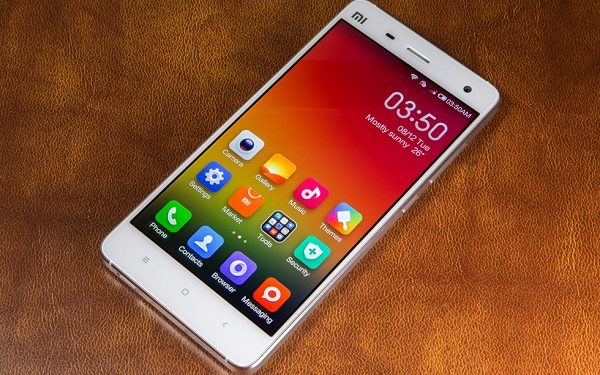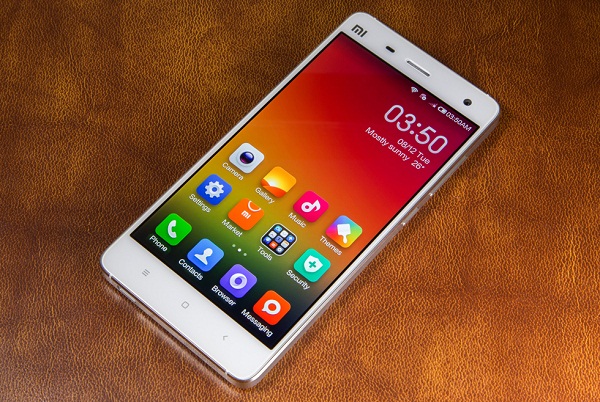
Xiaomi is known to be one of those Chinese manufacturers of phones that are flourishing, but more than that, because it is making its way into the Chinese mobile phone market in its own way, with a different strategy to other manufacturers, which we will try to understand in this article.
If we talk about sales, provided that Xiaomi has released a market model, has had hours of availability, something difficult to achieve in such a competitive industry with much larger fish, which can theoretically offer better products at better prices.
China does not leak to the domain Android, especially hand Samsung, followed by a lot of Chinese companies are delighted with the operating system Google allows. Xiaomi is one of choosing Android (not close the door to alternatives), but few reach the level of customization and detail of his work on the operating system.

The overall market is experiencing an Android / iOS duopoly, moving between innovation and the opportunities that the vertical integration. You control the entire process of creating and selling a device it becomes more important than it seems: to improve costs, not stay out of supplies of components, and sell the product with less reliance on channels.
Xiaomi has understood very well the market and does not compete in the same way as you might look Huawei or Lenovo. Bases its strategy on controlling the supply chain, creates its own sales channel, and has its own services and accessories, leaving the mobile phone as a central part, but not only in their business.
Xiaomi, a tribe or community of faithful
It is vital to get a lower price on the phone, it is the key for the user to enter Xiaomi what the world offers, once within the community, offered services and accessories also give economic returns. Periodic updates or opportunities for participation are important, which ends up making very attractive experience within the community.
Xiaomi is not a company looking for sales volumes. They seek customer satisfaction. They look for ways to give clients a big surprise
The idea is not to draw the attention of customers who are not interested in your product – there are already too many on the market – but be happy they consider to be within the Xiaomi community is the best option. Some might call it faith community, or even “Tribe”.
Although economic results are positive, it is estimated not give profitability, but not important for such a young company, which does not compare with the impressive sales of Apple or Samsung, but remain distinct.
Xiaomi sells more than hardware
The communion between software, hardware and services are vital in Xiaomi, we do not believe that none is above the other. The company to present novelties and periodic improvements makes people feel a sense of belonging.
- The hardware is the best; the phone has high – end specifications at competitive prices. Many models are created, preferably one year, they can better control at all levels.
- The accessories are well designed, with its own identity and colorful.
- The software is updated periodically, with locations as markets. Everything is encompassed within what is known as MIUI, which is the name of Android customization, and more.
- The services are also a priority; Xiaomi has its own instant messaging client, MiTalk. The design is very important and follows the line of all household products.
- No doors are closed to other devices, and we present your Xiaomi Box, a set-top box Apple TV style.
Most importantly, they are all available in their own sales channel. The sale is done online, and successfully from day adventure began. Xiaomi eliminates intermediaries, but also tries to create a link with each client.
The operators do not seem happy that free terminals camping a good price for the Chinese market, causing them to lose direct contact with customers. Not all Xiaomi phones are sold by the network, a small amount can be achieved through the operator, but with a price 30% higher.
In short, each of Xiaomi activities is designed to add value the product expected audience, a customer who is usually young and passionate about the Internet and new technologies.
Under a system of reserves, which are depleted
The phones are sold for reservations. No telephones are manufactured without stopping, and will serve as come out of the oven, Xiaomi knows will sell. Hence always as advertising that sold in hours.
The shortage is fictional, but makes manufacturing more manageable and also generates demand from others stare. The model does not seem expandable to many markets and millionaires sales numbers, but it works for them well for now.
Xiaomi, a little history and sales
It’s very little since Xiaomi Technology is a company that was born in spring 2010, with Lei Jun as founder and investor. Earlier he had been lucky with Joyo.cn, who bought Amazon and Amazon became China. The headquarters is located in Beijing.
We have to go until September 2011 to meet the first Xiaomi phone, known as Mi-One, I had the pleasure to know and analyze thanks to people in Deal Extreme I did get a test drive.
Dared to release an Android phone, with a dual-core Qualcomm Snapdragon processor, 8-megapixel camera and a screen with four inches of remarkable quality signed by Sharp; in addition, to detailed customization MIUI. This does not cost more than 300 dollars, half a competitor first such brand.
While Huawei and ZTE fought in international markets, Xiaomi production was raised for domestic consumption, output terminal dropper outside China’s borders. The priority was to have pleased the tribe.
In August 2012 presented the Xiaomi MI-2, again staying at the same price offered much more: 4.3 inches IPS, quad – core processor Qualcomm with 2GB of RAM, and MIUI on Jelly Bean.
Come up with sales that have been shared: 3.5 million units the first year for the first model, and between the two, in 2012, had accumulated 7 million units. The initial target was 2 million, so mission more than accomplished.
Forecasts for 2013 are to double sales (more than fifteen million), which seems feasible with the arrival of two new models with better looking if possible, than the above: Xiaomi Mi-2S and Xiaomi Mi-2A. The two models have been presented in April, especially highlighting the first to use a Qualcomm Snapdragon 600 chipset.
Another important milestone we have in the ROMs MIUI for terminals that are not Xiaomi, we have that have been downloaded more than ten million times. It has already reached version 5, and is built on Android, but people Xiaomi does not want to be tied to Google and has already stated on occasion that if another ecosystem allows them the same level of customization, will be taken into account.
Lei Jun, the Chinese called Steve Jobs
With Xiaomi not only can draw a parallel with Apple regarding their loyal fans, there is also who is in the figure of its creator. A Lei Jun, 42, likes to ride presentations with a similar style, even dress similarly. He accepts the comparisons, but he likes to define it as an inspiration.
Another feature of the leader is active in social networks, with four million followers on Weibo, where new products fail to advance, as his official channel.
The company has two large injections by investors, the first of 90 million, and a second last summer of $216 million, with Qualcomm included in operations. Currently, it estimated to have a value of 4,000 million, with sales of 2,000 million and more than 200 million profits.
The ambitions are there, someday will come to other markets officially. Plans point to the US in 2014 and are already organizing to operate in Taiwan and Hong Kong.
What is the roof of Xiaomi, and how far can reach with its strategy, are questions we cannot answer. I, as a user of the first phone, I trust that go far, thanks to the same that put to work.
Xiaomi wants to design their own processors
This gets interesting. The domain of Qualcomm in the field of mobile microprocessors seems to have expiration dates because there are several manufacturers who want to rely only on themselves (or almost) for their smartphones and tablets. Apple, LG, Huawei and Samsung have their own processors and are proving to have much to say, while MediaTek, Qualcomm traditional rival, is also presenting very interesting developments.
Today we know a new and interesting bet on this market. Xiaomi has partnered with Leadcore to avoid the traditional dependence on Qualcomm. The growth of this Chinese manufacturer who is second in market share in China only behind Apple’s amazing and it seems that his ambition is clear: they want to go further, and for that we seem to need differentiation also in the field of microprocessors.
Will Xiaomi avoid dependence on Qualcomm and MediaTek?
Mashal Cheng, director of Leadcore recently confirmed the agreement between the two companies, in which the latter will provide three levels of partnership:products, technology and patents . Maybe just this last leg is the most interesting for Xiaomi who has had recent problems in India by Ericsson patents and whose international expansion plans are also limited by that factor.
Late last year, rumors about an investment that occurred would have made Xiaomi stay with 51% of the shares of Leadcore. According to Cheng that data “is not possible. A third of our group -Datang Telecom Technology and Industry Group- remains the property of the state”. The company had operated so far hardly notice their presence, and even other manufacturers such as Spreadtrum seemed more interesting in recent months Leadcore.
But things changed with that – outside investment the amount outside- and the launch of redmi 2A Xiaomi showed they could go to those early models. This smartphone $100 has a Leadcore LC1860 , SoC manufactured with the technology of 28nm by TSMC with a CPU hexacore and GPU Mali T628 which among other things supports resolutions 2K and offers video capture resolución1080p to 60 fps plus integrated 4G connectivity.
In EETimes, they say Leadcore managed to take the final leap when in 2012 he opted for a radio architecture based on DSP CEVA which enabled it to offer a powerful catalog of micros with 4G connectivity, something that apparently was crucial to the decision Xiaomi. It remains to be seen what the result of this alliance, since the moment the LC1860 is not an exclusive micro to Xiaomi, which also should seek solutions also for its high-end devices. We’ll see if Leadcore is able to make Xiaomi give new impetus to its interesting history.
